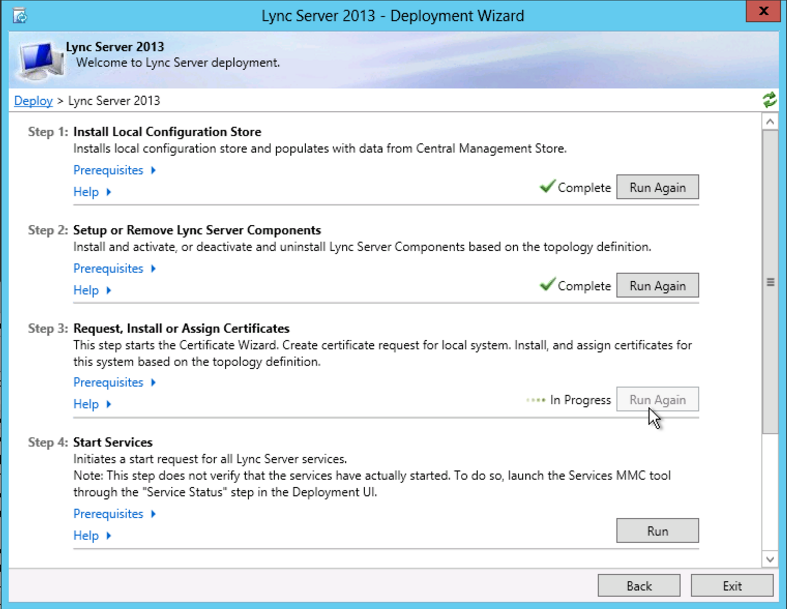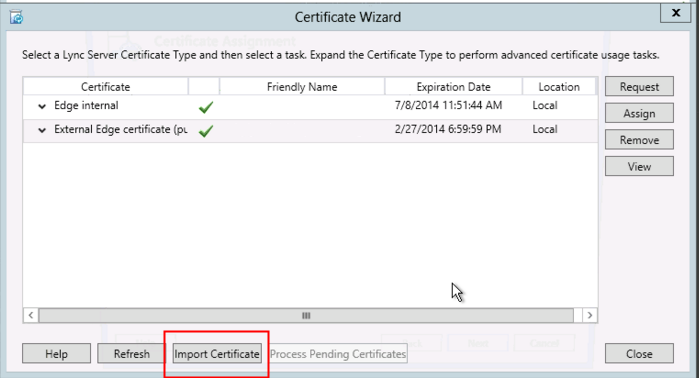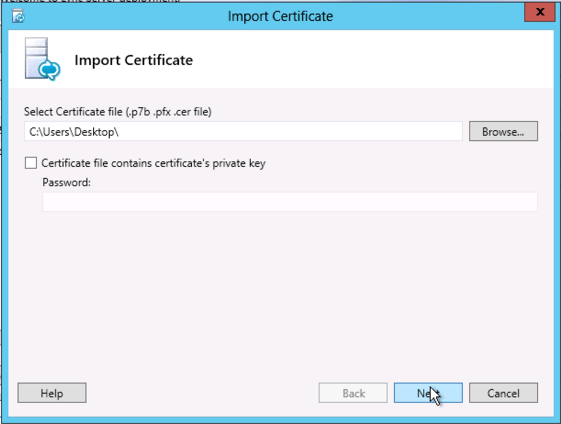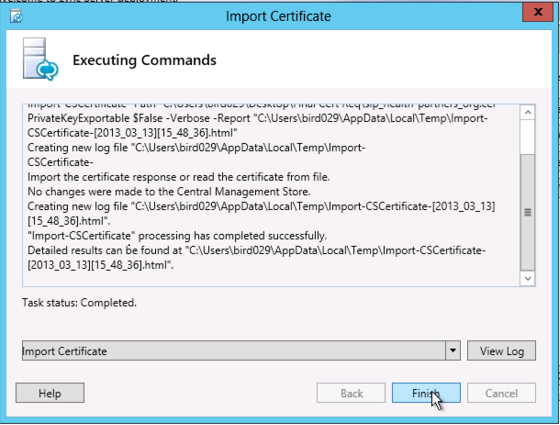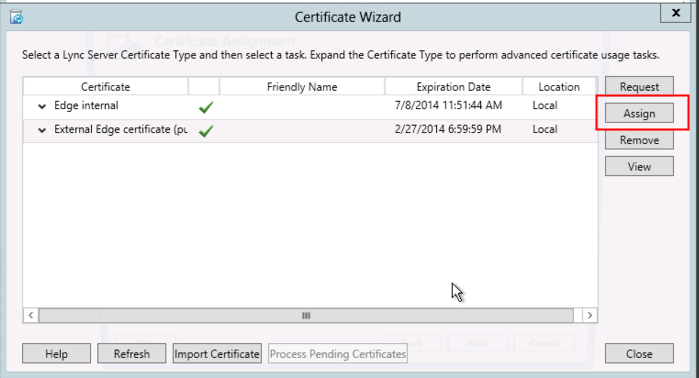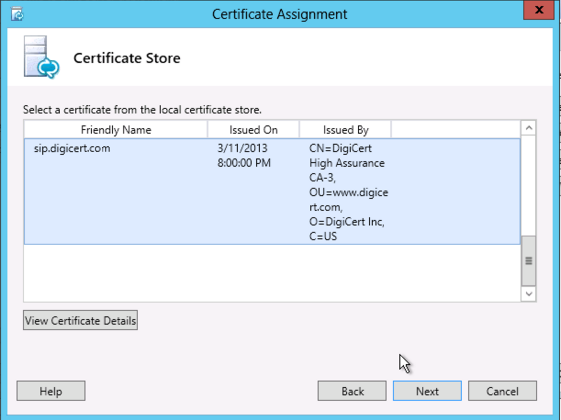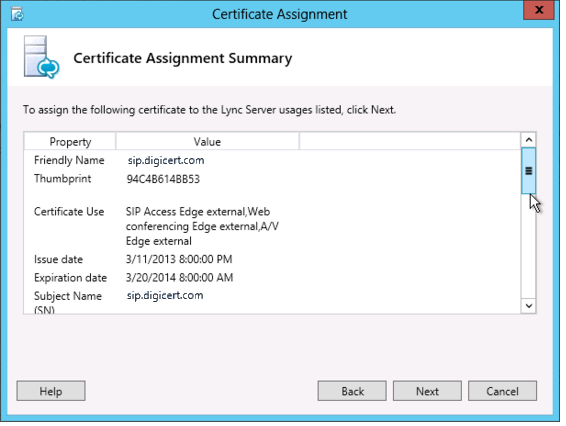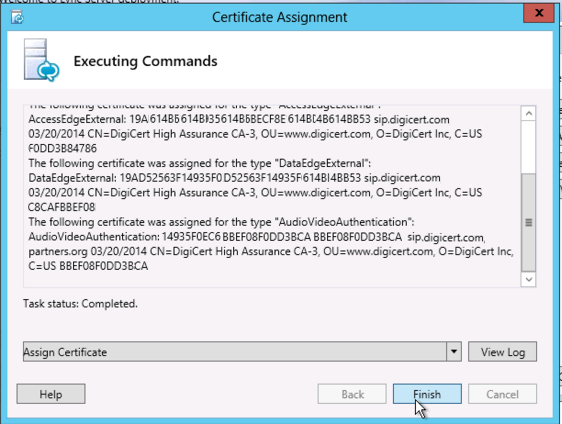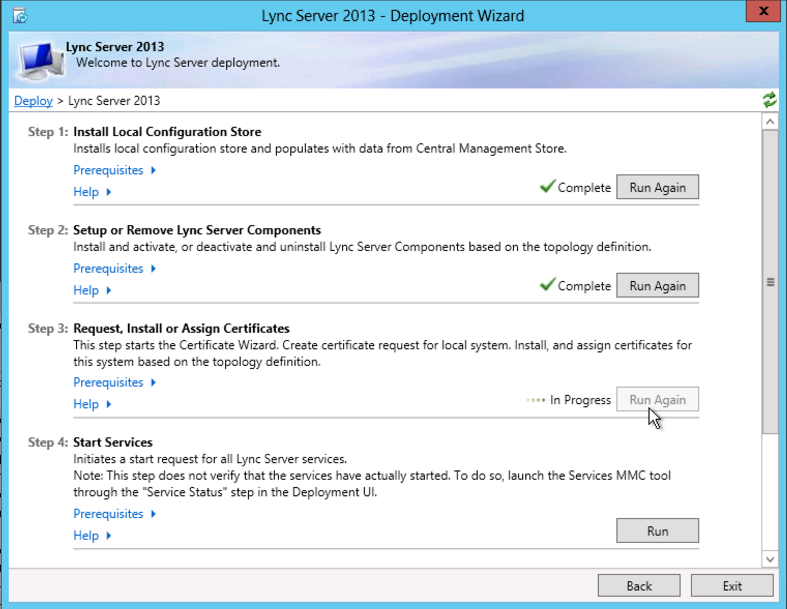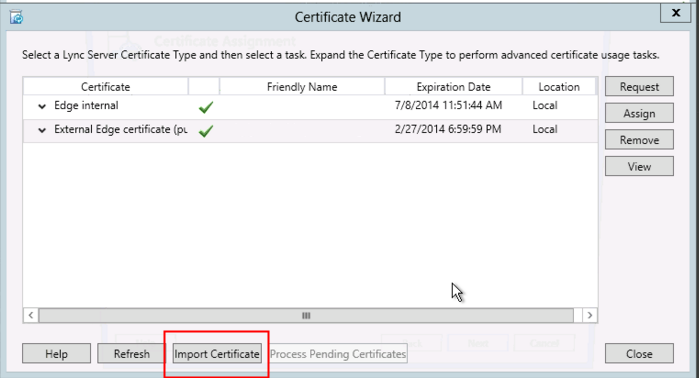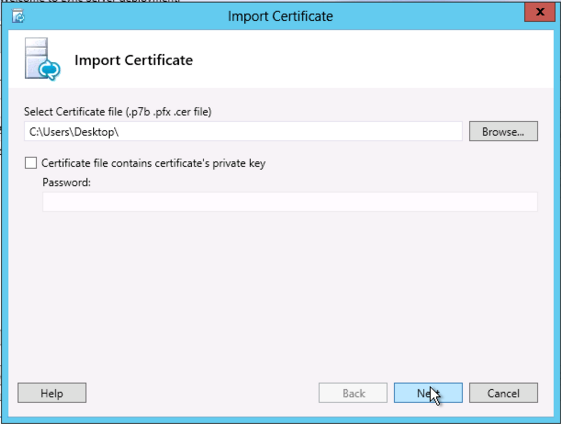Introduction:
Microsoft Lync 2013 combines instant messaging, VoIP calling, live meetings, and videoconferencing, but it’s more than the sum of these parts. Although Lync integrates with almost any PBX, it puts the PC at the center of communications so effectively that it could send your current phone system packing.
Lync provides clear VoIP calling and crisp videoconferencing without requiring special network accommodations. It integrates with Microsoft Exchange, Microsoft SharePoint, and Microsoft Office, bringing user presence information to Outlook and SharePoint team sites and allowing instant messages and phone calls to be initiated with a click.
SSL Installation steps
- On the Windows Start menu, click the Lync Deployment Wizard icon.
- Click Install (or Update) Lync Server System.
- In the Lync Server 2013 – Deployment Wizard, on the Welcome to Lync Server deployment page, in Step 3: Request, Install or Assign Certificates section click Run.
- In the Certificate Wizard window, select External Edge certificate and then click Import Certificate.
- On the Import Certificate page, next to the Select Certificate file box, click Browse to locate and select your SSL certificate file.
- PFX: If you used the DigiCert Windows Utility to export the SSL certificate, the certificate file will be a .pfx file.
- CER: If you used the Lync 2013 UI to create the CSR, the SSL certificate file will be a .cer file.
- If the certificate file contains the private key, check the Certificate file contains the certificate’s private key and then type the Password.
- Click Next.
- On the Summary page, verify that your information is correct and then click Next.
- On the Executing Commands page, verify that the import is completed (Task status: Completed) and then click Finish.
- On the Certificate Wizard main page, select External Edge Certificate and then click Assign.
Note: Don’t worry if your certificate doesn’t appear yet in the Certificate Wizard list. After you Assign the certificate, it should appear in this list. - In the Certificate Assignment wizard on the Certificate Assignment page, click Next.
- On the Certificate Store page, do the following:
- Click View Certificate Details to verify that you’ve installed the correct certificate.
- On the Certificate Assignment Summary page, verify that the certificate assignment details are correct, and then click Next.
- On the Certificate Store page, click Next.
- Click View Certificate Details to verify that you’ve installed the correct certificate.
- On the Executing Commands page, verify that that certificate assignment is completed (Task status: Completed) and then click Finish.
- To verify that your certificate has been properly installed, the “status” in the Status column on the External Edge Certificate should be Assigned.
Your certificate has been installed.
Import from PFX
If you’ve already imported/installed a certificate on another server, use the following instructions to import the certificate in a .pfx format to your Lync 2013 server.
- On the Windows Start menu, click the Lync Deployment Wizard icon.
- Click Install (or Update) Lync Server System.
- In the Lync Server 2013 – Deployment Wizard, on the Welcome to Lync Server deployment page, in the Step 3: Request, Install or Assign Certificates section click Run.
- In the Certificate Wizard window, select External Edge certificate and then click Import Certificate.
- On the Import Certificate page, next to the Select Certificate file box, click Browse to locate and select your SSL certificate file .pfx file.
- Check Certificate file contains the certificate’s private key and type the Password.
- Click Next.
- On the Summary page, verify that your information is correct and then click Next.
- On the Executing Commands page, verify that the import is completed (Task status: Completed) and then click Finish.
If you are unable to use these instructions for your server, we recommend that you contact either the vendor of your software or the organization that supports it.
